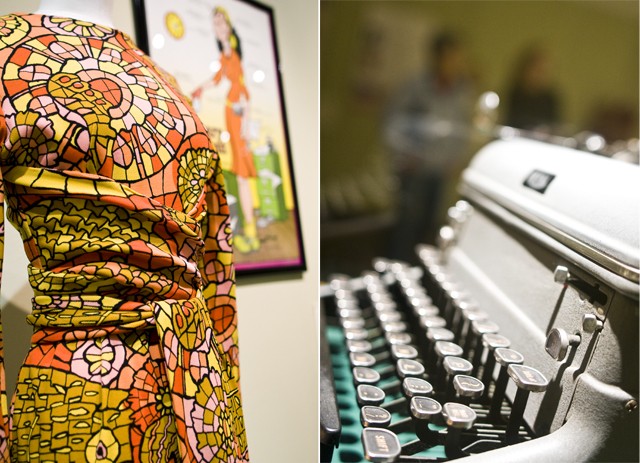An idea doctoral candidate Midori Green came up with while exploring her dissertation came to fruition Friday night as the Goldstein Museum of Design unveiled her exhibit on the development of the modern secretary. The exhibit, called âÄúHow Secretaries Changed the 20th Century Office: Design, Image, and Culture,âÄù illustrates the experience of the secretary from the early 1900s through the 1970s. Organized by Green and her adviser Kate Solomonson, the display follows the secretary from the first emergence as a âÄútypewriter girlâÄù in the 1900s through the change to the âÄúsexy secretaryâÄù in the âÄô40s and âÄô50s and to the âÄúadministrative professionalâÄù in the 1970s and âÄô80s. âÄúI looked around at one point and itâÄôs like my dissertation exploded all over the room,âÄù Green said. Housed in the Goldstein Museum on the St. Paul campus, the exhibit features items such as a pink 1970s IBM typewriter, an Ediphone dictating machine, desks, chairs and gag gifts that portray the sexualizing of the female secretary. The idea for the exhibit came when Green began her dissertation in 2008 about secretaries in popular culture, she said. She began working on the two projects simultaneously, and the exhibit opened Feb. 6. âÄúIt came out of my own background in office work. My mom was a secretary and my grandma went to secretary school,âÄù Green said. âÄúI was going through some old advertisements and noticing the ways secretaries were portrayed, and started wondering where the idea of the sexy secretary came from.âÄù While Green focused on artifacts, Solomonson, a professor in the department of architecture, was interested in the office buildings and work spaces of secretaries. The exhibit features photographs of different office buildings from the clerical workerâÄôs point of view. âÄúI wanted to look into the architectural reality of where people were working,âÄù Solomonson said. âÄúThe different attitudes of the times are reflected in the architecture.âÄù The 1920s were about efficiency, she said, while there was a shift in the 1970s toward individualism, which can be seen in the architecture and different office spaces. Sue LaTendresse, who is now executive assistant to Athletics Director Joel Maturi, got her first job at the University of Minnesota hand-writing transcripts at the age of 18 in 1968. Since then, she has worked in various office roles throughout the University, learning how to use computers in the office, watching the trends among each new class of students and experiencing the changes in societyâÄôs mindset about women and secretaries. âÄúYou are now judged on what you bring to your job and your skill level, and as far as thatâÄôs concerned, weâÄôve made huge strides,âÄù LaTendresse, who did not attend the exhibit, said. Many of the artifacts in the exhibit came from private collections, while the clothing came from the Goldstein Museum. The typewriters came from the Minnesota Historical SocietyâÄôs collection. âÄúWe never see these kinds of artifacts in an exhibition because nobody thought to collect them,âÄù Green said. âÄúTheyâÄôre typewriters, desks, little things people threw away.âÄù The exhibit runs from Feb. 6 to May 23 and will also feature a curatorâÄôs talk on Feb. 18 and a film series during Administrative Professionals Week in April. Green said the exhibit has garnered positive reactions from many visitors. âÄúSo many people have stories. Their moms, aunts or themselves were secretaries,âÄù she said. âÄúPeople were actually really excited about [the exhibit].âÄù While technology has made some tasks in the office easier, LaTendresse said, it has increased the expectations of what office employees can accomplish and has actually increased workloads because e-mails can be accessed from virtually anywhere. The treatment of women in the office has also gotten better over time, she said, but that is not necessarily due to societal changes. âÄúI think what people expect out of you and how youâÄôre respected is totally dependent on who you work for,âÄù she said. âÄúI worked for faculty who denigrated secretaries, but now I work for someone who knows the name of every janitor and every student worker.âÄù Green said that despite huge differences throughout the years, many issues still exist. âÄúSome things have changed and some things have not changed at all,âÄù she said. âÄúIâÄôve read things from 120 years ago where people are complaining about their bosses, and youâÄôd think it was written yesterday.âÄù

Image by Ian Larson
Secretaries
History of the secretary experience
A Goldstein Museum exhibit explores the development of the modern secretary.
Published February 7, 2010
1

